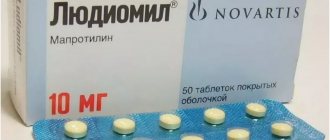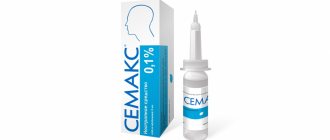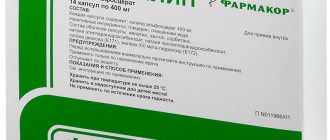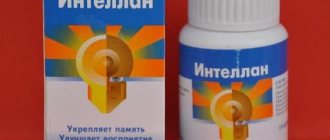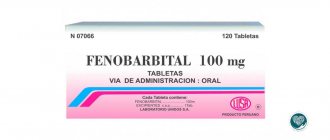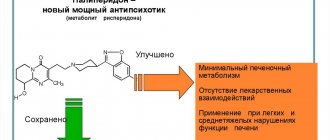A special group is represented by drugs for the treatment of depression, the therapeutic effect of which is associated with inhibition of the activity of the mitochondrial enzyme monoamine oxidase, accompanied by a decrease in the breakdown of catecholamines, as well as indole amines. Most monoamine oxidase inhibitors (MAOIs) act non-selectively and therefore increase the levels of not only catecholamines and serotonin, but also dopamine.
Monoamine oxidase inhibitors (iproniazide), like tricyclic antidepressants, appeared in the 50s of the twentieth century, in the process of searching for drugs needed to treat tuberculosis.
Opinions about the effectiveness of these antidepressants are controversial. In some cases, they are effective for depression resistant to other antidepressants, increased appetite, drowsiness, and atypical course of depression.
The effect of MAOIs on blood pressure is unpredictable, since these drugs increase the level of norepinephrine and adrenaline in the blood, the blood pressure numbers increase. At the same time, MAOIs inhibit the vasomotor centers and thereby reduce sympathetic activity (Anthony P., et al., 2002). The first signs of increased blood pressure may be pain in the occipital region, heaviness in the heart, intense pulse, and fainting.
In order to prevent a sharp increase in blood pressure while taking these drugs, you should exclude certain medications (desensitizing agents, anesthetics and painkillers), as well as foods containing tyramine (cheese, pizza, sour cream, smoked beef, sauerkraut, legumes , avocado, yeast products, soy sauce, etc.), drinks (champagne, beer, whiskey, coffee, chocolate). Normally, tyramine is destroyed by MAOIs before it is absorbed, but under conditions of inhibition of monoamine oxidase activity, tyramine contained in food products is absorbed. Subsequently, it is captured by adrenergic neurons, participates in synthetic processes and turns into a “false transmitter” - octopamine, which in turn leads to a massive release of norepinephrine and can cause a hypertensive crisis (Anthony P., et al., 2002). MAOI drugs are metabolized in the liver and, if this organ is diseased, can cause toxic damage.
| Find out more: Instrumental treatment for depression |
According to L. Elkin et al. (1989), non-selective MAO inhibitors are of secondary importance in the treatment of depression and are used only for simple and mild depression and when other, safer methods of treatment do not help. These are old, currently rarely used inhibitors - phenelzine (Nardil), isocarboxazid (Marplan), tranylcypromine (parnate).
The effectiveness of combining MAO inhibitors with TCAs has been shown for depression that is insensitive to the latter drugs (Pande A., et al., 1991). Non-selective MAO inhibitors can also be effective in atypical depression (hyperphagia, hypersomnia, anxiety and phobias) (Puzhinsky S., 2000). MAOIs are considered to be more effective than TCAs in the treatment of atypical depression.
The half-life of MAOIs is approximately 2.5 hours, maximum MAO binding (maximum effectiveness) is observed 14 hours after absorption of MAOIs, however, the antidepressant effect of these drugs does not appear until 4 weeks after the start of therapy.
Modern selective monoamine oxidase inhibitors that inhibit the activity of isolated isoenzyme A or B include: selective monoamine oxidase inhibitors type A - pyrazidol, moclobemide, selective monoamine oxidase inhibitors type B - selegiline (used in the early stages of Parkinson's disease).
Release form
Moclobemide is produced by various trading companies. It is always produced in the form of tablets. The dosage of the active substance in one tablet is 150 mg or 300 mg. The package can contain 30, 100 or 500 tablets. The dosage of the drug is indicated on the packaging.
There is a complete analogue of moclobemide - the drug Aurorix . The latter has the same active ingredient - moclobemide - and differs only in its release under a different trade name. There are no other complete analogues of the product.
pharmachologic effect
Moclobemide is an antidepressant whose mechanism of action is based on the reversible inhibition of monoamine oxidase type A. Monoamines are substances that are responsible for transmitting information about a good mood between nerve cells. The more of these mediators, the better a person’s mood and less anxiety. Monoamines include norepinephrine, dopamine and serotonin.
Depression and phobias occur when there are not enough of these mediators in the brain. Monoamine oxidase (MAO) is an enzyme that breaks down monoamines. MAO type A destroys serotonin and norepinephrine, MAO type B destroys dopamine. Moclobemide blocks MAO type A, thereby increasing the concentration of serotonin and norepinephrine in brain cells. This helps improve mood and reduce anxiety.
Moclobemide
International name of the medicinal substance:
Moclobemide The list of drugs containing the active substance Moclobemide is given after the description.
Pharmacological action:
Antidepressant, selectively and reversibly inhibits MAO type A, inhibits the metabolism of serotonin (mainly), norepinephrine and dopamine, increases their content in the central nervous system.
Possessing an antidepressant effect, it improves mood and concentration, eliminates increased fatigue, dysphoria, nervous exhaustion, psychomotor retardation, and improves sleep. The optimal antidepressant effect develops when MAO is suppressed by 60-80%. The effect appears by the end of 1 week of treatment. Does not have a negative effect on the reaction rate. Pharmacokinetics:
Absorption is rapid and complete after oral administration. TCmax - 1 hour after a single dose. Css is created by the end of 1 week of treatment. Bioavailability (depending on the dose taken) is 40-80%. Volume of distribution - 1.2 l/kg. Communication with plasma proteins (albumin) - 80%. Easily passes tissue barriers, apparent volume of distribution is about 1.2 l/kg. Metabolized in the liver during oxidative reactions by isoenzymes CYP2C9 and CYP2D6. In the form of metabolites (1% unchanged) it is quickly excreted by the kidneys, total clearance is 333-833.3 ml/min, T1/2 is 1-4 hours.
Indications:
Depression of various etiologies (with manic-depressive psychosis, various forms of schizophrenia, chronic alcoholism, senile and involutional, reactive and neurotic), social phobia.
Contraindications:
Hypersensitivity;
acute conditions accompanied by “confusion” of consciousness; excitement, agitation, pheochromocytoma, pregnancy, lactation, childhood. With caution. Thyrotoxicosis. Side effects:
From the nervous system: dizziness, headache, anxiety, agitation, agitation, insomnia, fear, blurred vision, paresthesia, rarely - confusion.
From the digestive system: dry mouth, nausea, heartburn, constipation or diarrhea, feeling of heaviness in the stomach. Allergic reactions: skin rash, itching, urticaria. Other: hyperhidrosis. Interaction:
Strengthens and prolongs the effect of adrenergic stimulants, opiates and ibuprofen.
Strengthens the vasoconstrictor effect of tyramine contained in food products, which (if possible) requires its exclusion from the diet. It is not recommended to combine with clomipramine (the likelihood of severe reactions from the central nervous system increases). Treatment with tricyclic and other antidepressants can be started immediately after discontinuation of moclobemide. Does not change the pharmacodynamics and pharmacokinetics of indirect anticoagulants, digoxin and ethanol. Cimetidine and other microsomal oxidation inhibitors slow down metabolism. Dextromethorphan increases the risk of severe central nervous system side effects. Concomitant use of selegiline is contraindicated. Special instructions:
In patients with schizophrenia, it can cause aggravation of the course of the disease (prescription is possible only under the guise of antipsychotic drugs).
Against the background of thyrotoxicosis or pheochromocytoma, as well as in patients with initially elevated blood pressure (especially those receiving large amounts of tyramine from food), a significant increase in blood pressure is possible. Preparations containing the active substance Moclobemide:
Aurorix
The information provided in this section is intended for medical and pharmaceutical professionals and should not be used for self-medication. The information is provided for informational purposes only and cannot be considered official.
Indications
Moclobemide is most often used in the practice of psychiatrists and psychotherapists. Its appointment is justified in the following cases:
- Depressive episode of any severity;
- Recurrent depressive disorder;
- Bipolar affective disorder, current episode of depression;
- Symptomatic decrease in mood due to other diseases;
- Persistent decline in mood in old age;
- Anxiety phobic disorder.
The drug is often used to treat depression as a separate pathology and as a symptom of other diseases.
There are two types of anxiety-phobic disorder for which moclobemide has proven effective: social phobia and agoraphobia. Social phobia is the fear of interacting with other people. Agoraphobia is the fear of open areas and crowded spaces. In both diseases, moclobemide can reduce anxiety and help overcome fear.
Side effects
The side effect of the drug is associated with its effect on norepinephrine and serotonin, which, in addition to influencing the emotional sphere, have a number of other functions. Common side effects of moclobemide include dizziness, headache, nausea, insomnia, or drowsiness. At the beginning of treatment, many patients experience a decrease in the production of saliva and tear secretion, a feeling of dryness in the oral and nasal cavities, and dry eyes. Gradually these symptoms disappear.
Less common side effects include constipation, epigastric pain, agitation, hand tremors, and transient visual disturbances. In patients with bipolar affective disorder, exceeding the recommended dosage may cause a phase change to manic. Patients with schizophrenia may develop paranoid syndrome during treatment.
Moclobemide
Alcoholic drinks containing tyramine (beer, ale, wine) sometimes cause a hypertensive reaction.
Antidepressants (fluoxetine, citalopram) - possible development of serotonin syndrome - development of potentially fatal serotonin syndrome.
Dextromethorphan - nausea, tremor, dizziness and vomiting, moderate agitation.
Meperidine and possibly other opioid analgesics - potentiation of their effects. The combined use of meperidine and moclobemide is contraindicated; use other opioid analgesics with caution.
Sympathomimetics, including epinephrine with local anesthetics, cause a sharp increase in systolic pressure. Do not use drugs containing ephedrine, amphetamine or adrenergic agonists.
Altretamine - when administered in combination, severe orthostatic hypotension is possible.
Cimetidine - inhibition of metabolism and increased concentrations and toxicity of moclobemide.
The combination of amitriptyline + chlordiazepoxide is incompatible with MAO inhibitors (due to the risk of developing serotonin syndrome, including myoclonus, agitated spasms, delirium and coma). The use of the combination of amitriptyline + chlordiazepoxide can be started one day after discontinuation of the reversible MAO inhibitor moclobemide. The use of MAO inhibitors can be started 2 weeks after discontinuation of the amitriptyline + chlordiazepoxide combination. In any case, both moclobemide and the combination of amitriptyline + chlordiazepoxide should be started with small doses, gradually increasing them depending on the effect.
An increase in blood pressure and the occurrence of a hypertensive crisis have been described after the simultaneous use of buspirone and moclobemide (a reversible MAO inhibitor); therefore, buspirone cannot be combined with moclobemide. At least 14 days must pass after stopping buspirone before starting moclobemide; however, buspirone can be started 1 day after stopping moclobemide.
Moclobemide inhibits MAO and, against the background of venlafaxine, provokes the development of adverse reactions,
When used simultaneously with zolmitriptan - an increase in the maximum plasma concentration and AUC of zolmitriptan; with clomipramine - cases of serotonin syndrome have been described; with levodopa - possible headache, nausea, insomnia; with selegiline - increased sensitivity to tyramine; with sumatriptan - increasing the bioavailability of sumatriptan; with fluoxetine, citalopram - the development of serotonin syndrome is possible.
Moclobemide enhances the effect of glipizide and diazepam.
Repaglinide - moclobemide inhibits MAO and enhances the hypoglycemic effect.
Moclobemide prolongs and enhances the anticholinergic effect of diphenhydramine.
The systemic effect of ibuprofen can be enhanced and prolonged with simultaneous administration of moclobemide.
Carbamazepine - moclobemide, as an MAO inhibitor, increases the likelihood of side effects.
Carvedilol - enhances the effect on blood pressure (hypotension) and heart rate (bradycardia).
Clonazepam - potentiation of central nervous system depression.
Methyldopa - enhances the antihypertensive effect; at the same time, cases of the development of a hypertensive crisis with psychomotor agitation have been described; co-administration is not recommended.
Metoclopramide - Moclobemide inhibits MAO and increases the duration of circulation of catecholamines released by metoclopramide.
Promethazine - moclobemide increases the risk of developing extrapyramidal disorders (inhibits MAO).
Salmeterol, terbutaline - moclobemide as an MAO inhibitor may enhance the effect on the cardiovascular system.
Moclobemide inhibits MAO and, when combined with sertraline, can lead to severe, life-threatening reactions, including hyperthermia, rigidity, myoclonus, autonomic disturbances, delirium and coma; simultaneous and/or sequential use is contraindicated.
Tramadol - moclobemide inhibits MAO and increases the risk of serotonin syndrome (fever, agitation, trembling and restlessness, seizures).
Moclobemide inhibits MAO, prolongs and enhances the anticholinergic effects of cyproheptadine and CNS depression; combined use is contraindicated.
Instructions for use
The drug is taken after meals with a small amount of water. The initial dosage of moclobemide is 300 mg per day. The required dose is divided into two doses - one tablet in the morning and one in the evening. Then the concentration of the product is gradually increased.
After just a week, it is recommended to reach an average dose of 450 mg. In this case, two tablets of 150 mg are taken in the morning, one in the same dosage in the evening. After a few more days, you can increase the concentration to 600 mg. In this dosage, the drug is taken twice a day, 150 mg.
When treating anxiety-phobic disorder, it is recommended to start with 300 mg in two doses, and on the fourth day of treatment increase the dose to 600 mg. The duration of the course of therapy is regulated by the attending physician.
Pyrazidol
Pyrazidol is a domestic antidepressant with a balanced action; it selectively inhibits MAO type A (short-term and completely reversible). The thymoanaleptic effect manifests itself in the relief of depressive symptoms, primarily vital melancholy, mental anesthesia and psychomotor retardation.
This drug normalizes the metabolism of monoamine neurotransmitters, blocks the deamination of serotonin, to a lesser extent norepinephrine, and to a small extent tyramine, and partially inhibits the reuptake of monoamines. It exhibits nootropic properties and improves cognitive function. It should be borne in mind that pyrazidol is mainly used for mild depression or its moderate forms, including neurotic and masked depression, and may be ineffective for severe depression accompanied by manifestations of agitation (up to 50% of patients with deep depression of the melancholic type give a positive response to therapy pyrazidol). The drug is also used for Alzheimer's disease, “organic” depression, and alcohol withdrawal syndrome. Pyrazidol is also used in the treatment of psychosomatic disorders, astheno-depressive symptoms that have developed against the background of myocardial infarction and cerebral atherosclerosis (the drug combines well with other medications). The medication has a normalizing effect on the lungs during manifestations of hypoxia.
The therapeutic effect after taking pyrazidol appears 3-5 days after the start of therapy. The optimal daily dose of the drug is 15-300 mg. (begin treatment with 50-75 mg in two doses). When the dosage of the drug is over 200 mg. its sedative effect begins to dominate, and more than 400 mg. the drug may have an effect on severe endogenous depression.
The balanced action of pyrazidol is characterized by a combination of an antidepressant effect with an activating effect in adynamia and apathy and a sedative effect in an agitated state. As a result of the above, the drug is effective for mixed, atypical depression.
During the treatment process, such comorbid symptoms of depression as: manifestations of senesto-hypochondria, obsessive-compulsive disorder, and signs of depersnonalization also disappear.
Side effects of pyrazidol are mild and limited to dry mouth, sweating, weakness, and tachycardia. Allergic reactions and dizziness occur more rarely. Unlike TCAs, the drug does not have an anticholinergic effect. Contraindications to the drug are acute hepatitis and blood diseases.
Reviews
Oleg S .: “I have suffered from agoraphobia since childhood. At first I was only afraid of large squares, stadiums, and busy streets. Gradually the disease progressed, and over time it became difficult for me to simply leave the house and go outside. Then I realized that I needed to see a doctor. I was treated with moclobemide, taking 600 mg twice a day. I began to notice a decrease in fear after two weeks. Now I continue to take the drug and walk around the city calmly.”
Doctor's review : “Moclobemide is an antidepressant from the group of MAO inhibitors. Its advantage lies in its simultaneous antidepressant and anti-anxiety effects. Moclobemide is often used in patients with various combinations of depression and anxiety disorders. The advantage of the drug is its effectiveness, good tolerability and relative safety.”
Content

